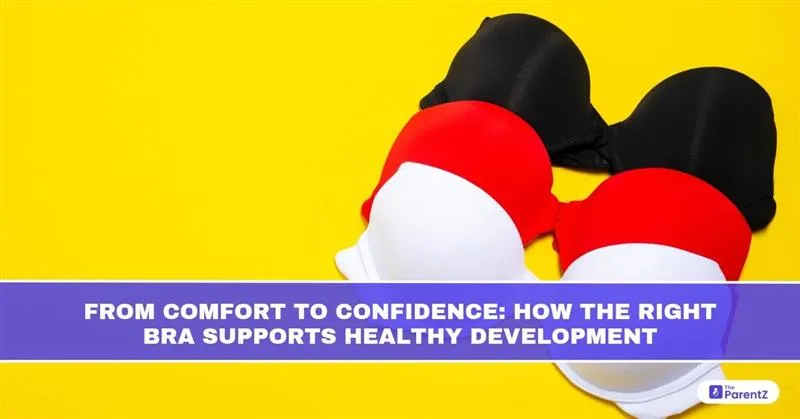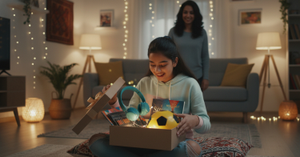The Early Days: Not Just About the Bra
Anjali was 12 when she first noticed the changes: tiny soreness in her chest, the way her T-shirt clung differently, and whispers among classmates about “starting to wear a bra.” She didn’t say anything at first. It felt private, maybe even a little awkward. But what she needed wasn’t just a bra. She needed comfort, reassurance, and the space to talk about her changing body.
Puberty is more than physical. It’s also a shift in how girls see themselves and want to be seen. And in this journey, a well-chosen bra does more than support the body; it becomes part of how a young girl learns to trust herself.
Why a Bra Isn’t “Just Clothing”
For growing girls, bras serve multiple roles beyond modesty or style. Physically, they help support tender, developing breast tissue. Emotionally, they provide a sense of safety and ease in social settings, whether in classrooms, sports, or family gatherings.
When a bra fits well and feels right:
- Girls stop worrying about how their shirts look
- Movement feels natural running, reaching, or stretching is easier
- There’s less tugging, adjusting, or discomfort during the day
- They feel more in control of their personal space and changing body
These small things can mean a lot, especially when confidence is still forming.
The Connection Between Comfort and Growth
Breasts are made up of fat, milk ducts, and soft connective tissues. During puberty, they grow quickly, sometimes unevenly, and may feel sore, itchy, or tender. A gentle, well-fitted bra helps minimize friction, reduce bounce during movement, and avoid long-term strain on the chest and shoulders.
Girls often don’t realize how much their mood is affected by discomfort until they wear something that fits properly. It’s the difference between being distracted all day or focusing freely on school, hobbies, and friendships.
What Happens When the Bra Is Wrong
A poor-fitting bra isn’t just a “style mistake.” It can quietly lead to:
- Neck and shoulder pain from straps that dig in
- Red marks or rashes from tight bands or rough fabrics
- Embarrassment when tops fit awkwardly or movement feels restricted
- Posture issues from overcompensating with slouching or shrugging
- Avoidance behaviors like skipping sports, avoiding hugs, or hiding behind bags
When these discomforts pile up, girls may start to feel self-conscious or withdrawn. That’s why the first few bras a girl wears are so much more than fabric; they’re part of how she builds comfort with her own body.
A Trusted Space: When Girls Can Confide
Many girls don’t openly say, “I need a bra.” Instead, they show signs pulling at their shirts, skipping activities, or going silent when lingerie ads play on TV. If the adults around them respond gently and without teasing, the conversation becomes easier.
Some mothers, sisters, and teachers create this space naturally. They notice the changes and begin small chats, like:
- “Would you like to check out some soft innerwear this weekend?”
- “This top doesn’t feel very comfy without a layer should we find something light underneath?”
- “Want to look at some growing-up care kits online?”
When girls feel seen without judgment, they are more likely to open up. That’s when a bra becomes more than support—it becomes a bridge of trust between generations.
The Influence of Impulse Buys and Media Trends
Instagram, YouTube, and online shopping often turn bra buying into something fast and trendy. Influencers show off “cute” styles, promising comfort and aesthetics in one shot. But real girls don’t live in edited videos.
A growing number of mothers and teens now admit that they bought lingerie sets online after watching influencer hauls only to receive scratchy fabric, poor stitching, or tight fits. Some ended up with skin irritation, while others had to throw away pieces that were never worn.
Media pressure can make girls think certain brands are cooler or more acceptable. But these purchases, if made without trying or understanding size charts, can hurt more than help. And emotionally, when a bra bought with excitement turns out wrong, it’s discouraging.
How to Make Better Choices Without Shame or Stress
- Start with basics, not trends. Initial bras should be about comfort, breathability, and ease of use. Avoid complicated straps, harsh underwires, or push-up padding.
- Understand that sizes change often. A girl may go up or down a cup or band size every 6–12 months in her teenage years. That’s normal. Being flexible is healthier than clinging to a number.
- Buy from trusted sources. Offline stores with trained fitters, or well-reviewed websites with flexible return policies, are safest. Stick to known brands when starting out.
- Keep conversations normal, not dramatic. A bra isn’t a big announcement; it’s a simple addition to self-care. Avoid jokes or forced comparisons about size, shape, or growing up “too fast.”
- Look for support on your terms. Whether it’s a mom, older cousin, or even a favourite YouTuber, choose someone whose advice feels kind and informed, not flashy.
YouTube Resources That Speak Gently
Here are a few channels where teens have found real support, not just product ads:
- “That Indian Girl” – Known for body-positive talks and gentle puberty guides
- “Dr. Tanaya (Dr. Cuterus)” – A doctor who speaks about puberty, bras, and periods with simplicity and humor
- “Fit with Meera” – Yoga teacher discussing how to support the chest area during practice, and choosing bras for comfort
- “MomCom India” – Parenting tips including adolescent growth care
- “Sisters Speak” – A soft-spoken, peer-led channel where teens talk about self-image and first bra experiences
These creators focus on body respect, comfort, and smart choices, not fast fashion or clicks.
Final Words: Supporting More Than Just the Body
The journey from wearing a first bra to choosing styles for different needs is filled with quiet milestones. But underneath every size tag is a deeper layer of support for the growing mind and self-image.
When girls are given space to choose, ask, and even say, “I don’t know yet,” they learn that their voice matters. When they wear a bra that actually fits, not because an ad said so, but because it feels good, they learn to trust themselves. And when someone listens, explains gently, and doesn’t make growing up feel like a race or a joke, they feel safe.
So yes, bras support the body. But the right one also helps a girl stand straighter, walk taller, and begin to confide in her own body and voice.








Be the first one to comment on this story.